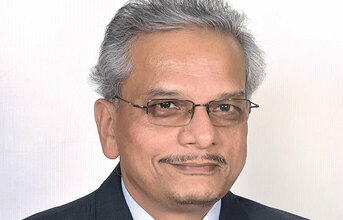
How does Koppal Toy Cluster aim to cater to the international toy market demands by manufacturing in India? How is it also reshaping North Karnataka's future and contributing to the growth of India and the manufacturing sector?
Spread over 400 acres, the Koppal Toy Cluster (KTC), India's first toy manufacturing cluster, is built to cater to global players. It comprises an exclusive Special Economic Zone (SEZ), apart from a Domestic Tariff Area (DTA).
KTC offers end-to-end infrastructure and services as a one-stop manufacturing solution. It is set to play a key role in India's quest to become a dominant player in the global toy market. Built to house up to 100 units when fully occupied, the industrial cluster offers a viable option for global manufacturers and toy brands seeking to diversify their manufacturing and supply chains away from other production centres like China and Vietnam.
For instance, one of the first occupants in the SEZ makes rubber components used in toys made by other units within the cluster. Aequs, one of the largest exporters of toys in the country today, is an anchor participant in the KTC.
Exporting to over 60 countries, Aequs boasts of one of the largest manufacturing spaces in the country, making it one of the biggest toy makers and exporters in India.
Understandably, KTC is expected to transform the socio-economic scenario in North Karnataka, and particularly in Koppal, which is the most backward district in Karnataka. With few jobs available locally, the Koppal district is characterised by rampant migration of labour and is an ideal location for setting up new industries. When fully occupied, the KTC is slated to provide direct employment to 25,000 people, subsequently generating another 1,00,000 indirect jobs in the region. Many of these jobs will require semiskilled workers, including women from the region.
Why vertical integration and supply chain is crucial for ODM to become successful in India? Which are the other models the industry needs to focus on to emerge as the global hub for manufacturing?
Vertical integration, by its very nature, is beneficial to any industry, as it enables lower costs, better quality, and quicker turnaround in production cycles. However, Original Design Manufacturing (ODM) for toys is a new area for Indian toy manufacturers who, for many years, have been dependent on OEM specifications and designs for manufacturing. There are several upstream and downstream capabilities that ODM players need to develop.
For instance, rapid prototyping is a crucial element for New Product Development (NPD), which requires companies to have in-house 3D printing, prototype mould development, styling, designing, and testing capabilities.
The Aequs Innovation Centre (AIC), set up along with the KLE Technological University, is a first-of-its kind initiative in the country for innovation in toys and consumer durables, representing a step in this direction by Aequs. The AIC complements Aequs' 30-strong NPD team in the ‘Toys' business. Having already proven itself as a successful contract manufacturer for global OEMs, Aequs is well placed to tap into the ODM services market with its own ideas and designs for brand owners.
What challenges do you anticipate India might face in implementing the ODM model for toy manufacturing?
Breaking into the ODM services market begins with the design aspect. Developing original and new toys is a highly specialised field dominated by established studios in the West, which use the services of design houses in centres like Hong Kong, known as the toy design capital of the world.
For instance, Aequs has its own design house in Hong Kong, strategically positioned to stay updated on the latest market trends. This proximity allows them to share ideas and designs for the industrialisation process with Aequs Toys in India. Indian companies will need to establish themselves in this realm first.
Do you think the ODM model has the potential to create employment opportunities and contribute to the socio-economic development of India? What steps is Koppal Toy Cluster (KTC) taking to upskill, skill, and reskill the existing workforce?
In terms of job creation, ODM itself will be a minor contributor, as the number of people directly engaged in this will be few. However, more ODMs would lead to higher domestic manufacturing and hence accrue the benefits thereof.
As for skilled manpower, toy manufacturing itself does not call for very high-end manpower capabilities. As such, Aequs has a very mature skilling initiative which takes care of all its manpower training needs.
The Aequs Skill Development Centre (SDC) imparts training across all the domains needed for workers to be employed. The SDC also runs the country's first Toy Painting Institute. The SDC has the capability to cater to the needs of all the units within the KTC.
Continue reading on Page 2


























